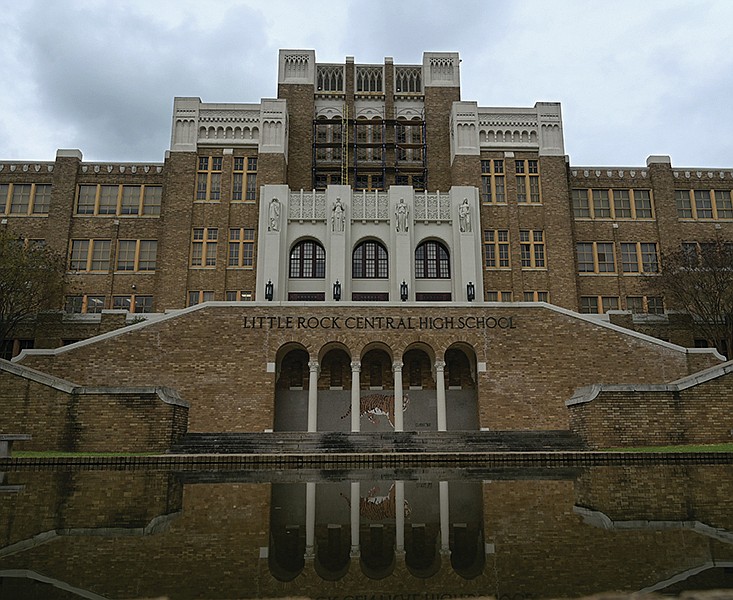Members of the Little Rock Board of Directors on Tuesday approved a resolution temporarily halting the issuance of permits for demolition as well as exterior building permits in the historic neighborhood around Little Rock Central High School.
According to the resolution's language, the moratorium in the Central High School Neighborhood Historic District will last for six months from the measure's adoption date, meaning the pause will extend until at least January 2023.
The resolution, which was approved without discussion Tuesday as part of the city board's consent agenda, allows for a series of exceptions. The moratorium will not apply to interior-only permits, structures that sustain damage or building permits already pending before the city's Planning and Development Department, according to the measure's text.
The Planning and Development Department submitted the resolution to the city board for consideration.
The boundaries of the historic district currently extend from an area just north of Little Rock Central High School along West 12th Street to the intersection of West Roosevelt Road and Martin Luther King Jr. Drive at its southeast corner.
According to city documents, officials hope the moratorium will provide a window of time for them to continue to explore the creation of a local-ordinance district for the Central High School area without further erosion of its historic fabric in the meantime.
A local-ordinance district for the neighborhood would add a layer of public review at the level of the Little Rock Historic District Commission when individuals seek to make certain structural modifications within the area.
At the moment, the only such district enacted by municipal officials in Little Rock is the MacArthur Park Historic District.
The first iteration of the Central High School Neighborhood Historic District was added to the National Register of Historic Places in 1996. An expansion of the historic district's boundaries followed in 2012.
A draft city report from the Planning and Development Department and the Historic District Commission available online and dated July 2022 endorses the creation of a local-ordinance district.
The report describes the Central High School historic district as an "endangered historical resource" at risk of losing its National Register designation and estimates the current eligibility ratio of historic structures to be 59% "and dropping." A historic district on the National Register must retain a ratio of at least 51%, the report says.
According to the report, when historic districts are submitted to the National Register, their structures are designated as either "contributing," meaning a structure serves as "a good example of a recognized architectural style," or "non-contributing," meaning architecturally defining elements have been lost to alteration, or the structure is less than 50 years old.
At a city board meeting last week, Planning and Development Director Jamie Collins suggested that officials intended for the moratorium to apply to structures designated as contributing, including commercial buildings.
The Central High School district "suffers extensively from demolitions, property neglect, and incompatible alterations," the draft report says. "The City of Little Rock has enacted multiple indirect tools to address this endangerment over the years, but these have fallen short of impacting the issue in a meaningful way."
Planning and Development staff identified 46 demolitions within the district since 2010; among the demolished structures, 23 were contributing, the report says.
"Once these demolitions occur, the structures, even if reconstructed, will never contribute to the district's National Register totals," the report says.
The boundaries of the proposed local-ordinance district for the Central High School neighborhood would be identical to the existing historic district on the National Register.
Applications for altering, constructing, restoring, demolishing or moving structures within the proposed district would go before the Historic District Commission, but the commission's review would not extend to ordinary maintenance or interior improvements, according to the report.
Additionally, if officials were to create a new Central High School local-ordinance district, the seven-member Historic District Commission would be expanded to eight or nine members in order to include representatives from the new zone, the report says.
